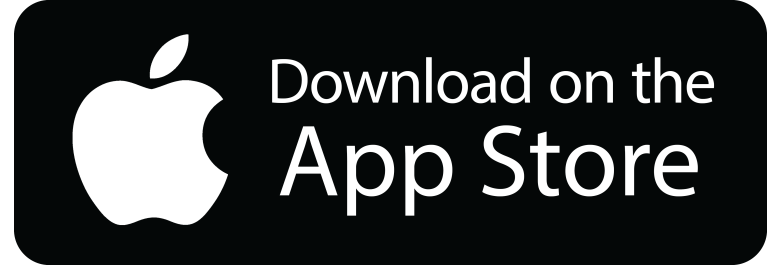1. Innovation & New Product Development
Framework: The Jobs-To-Be-Done (JTBD) Theory
Questions to ask:
Example: Dyson
2. Building a Customer-Centric Culture
Framework: The Voice of the Customer (VoC) Programme
Questions to ask:
Example: Zappos
Framework: The Kano Model
Questions to ask:
Example: Apple Inc.
4. Customer Retention
Framework: The Net Promoter Score (NPS)
Questions to ask:
Example: British Airways
5. Referrals & Word-Of-Mouth Marketing
Framework: The Customer Journey
Questions to ask:
Example: Airbnb
Customer feedback can be a powerful source of inspiration for innovation and new product development. By actively listening to your customers' needs, desires, and pain points, you can identify new market opportunities and develop products or services that address unmet needs.
Framework: The Jobs-To-Be-Done (JTBD) Theory
The JTBD Theory is a framework that focuses on understanding the underlying problems and desires that drive customers to seek out certain products or services. By uncovering the "jobs" that customers need to accomplish, you can develop innovative solutions that cater to these needs more effectively.
Questions to ask:
- What unmet needs or desires do our customers have?
- Are there any common pain points or frustrations that we can address with a new product or service?
- How can we utilise customer feedback to inform and validate our new product development process?
Example: Dyson
Dyson is a prime example of a company that leverages customer feedback to drive innovation. By identifying common complaints about traditional vacuum cleaners, such as limited suction power and cumbersome designs, Dyson developed a range of innovative products that addressed these issues and revolutionised the market.
2. Building a Customer-Centric Culture
Fostering a customer-centric culture within your organisation is crucial for long-term success. By making customer feedback a core component of your company's values and decision-making processes, you can create a culture that is focused on meeting and exceeding customer expectations.
Framework: The Voice of the Customer (VoC) Programme
A VoC program is a structured approach to collecting, analysing, and acting on customer feedback. By implementing a VoC program, you can ensure that customer feedback is consistently integrated into your organisation's strategy and decision-making processes, fostering a customer-centric culture.
Questions to ask:
- How can we incorporate customer feedback into our organisational culture and values?
- What processes can we put in place to ensure that customer feedback is consistently considered in decision-making?
- How can we empower employees to take ownership of customer feedback and drive improvements?
Example: Zappos
Zappos, an online shoe and clothing retailer, is renowned for its customer-centric culture. The company's commitment to customer feedback is evident in its exceptional customer service and focus on continuously improving the customer experience based on insights from customer feedback.
3. Product Development
3. Product Development
Testimonials from customers provide valuable insights into what works well and what doesn't. By analysing this feedback, you can identify areas of your product or service that require improvement, as well as features that resonate particularly well with your customers.
Framework: The Kano Model
The Kano Model is a useful framework for categorising customer feedback into three main categories: basic needs, performance needs, and delighters. By understanding the different types of feedback, you can focus on addressing the most pressing issues and enhancing the aspects of your offering that truly matter to your customers.
Questions to ask:
- What aspects of our product/service are customers most satisfied with?
- Which features are consistently causing problems or dissatisfaction?
- Are there any unmet needs or desires that our customers are expressing?
Example: Apple Inc.
Apple has long been known for its commitment to customer feedback. The company frequently uses insights from customers to improve its products, as seen with the introduction of a larger screen size on the iPhone 6 in response to market demand.
4. Customer Retention
Addressing negative feedback not only helps improve your product or service but also has a direct impact on customer satisfaction and retention. By proactively tackling issues raised by customers, you demonstrate your commitment to their satisfaction and reduce the likelihood of them seeking alternatives.
Framework: The Net Promoter Score (NPS)
The NPS is a widely-used metric for measuring customer satisfaction and loyalty. By tracking your NPS over time, you can monitor the impact of your customer feedback initiatives and identify areas where further improvements are needed.
Questions to ask:
- What are the most common reasons for customer dissatisfaction?
- How can we address these concerns to improve overall satisfaction?
- What steps can we take to prevent similar issues from arising in the future?
Example: British Airways
British Airways has implemented a comprehensive customer feedback programme that includes both solicited and unsolicited feedback. This allows them to address customer concerns quickly and proactively, leading to improved satisfaction and loyalty.
5. Referrals & Word-Of-Mouth Marketing
Satisfied customers often turn into brand advocates, leading to positive reviews, free word-of-mouth marketing, and new prospects entering your sales funnel. By making customer feedback a priority, you can leverage the power of personal recommendations and boost your reputation in the market.
Framework: The Customer Journey
Mapping out the customer journey can help you identify key touchpoints where feedback can be collected and leveraged for marketing purposes. By targeting these touchpoints, you can maximise the impact of positive feedback and encourage satisfied customers to share their experiences with others.
Questions to ask:
- Which touchpoints in the customer journey are most likely to generate feedback?
- How can we encourage satisfied customers to share their positive experiences with others?
- What tools or platforms can we use to amplify the impact of word-of-mouth marketing?
Example: Airbnb
Airbnb's user-friendly review system encourages guests to provide feedback on their experiences, and the platform showcases these reviews prominently on host profiles. This helps to build trust among potential guests and drives more bookings for hosts with positive feedback.
To harness the power of customer feedback and drive business success, consider enrolling in our entrepreneurship courses. These courses are specifically designed to equip aspiring entrepreneurs with the knowledge, skills, and tools needed to build successful businesses. Don't miss out on this opportunity to enhance your entrepreneurial journey and set your business on the path to long-term success.
To harness the power of customer feedback and drive business success, consider enrolling in our entrepreneurship courses. These courses are specifically designed to equip aspiring entrepreneurs with the knowledge, skills, and tools needed to build successful businesses. Don't miss out on this opportunity to enhance your entrepreneurial journey and set your business on the path to long-term success.
Write your awesome label here.
Never miss our news!
Thank you!
Get updates on live streams, news and more right in your mailbox.



